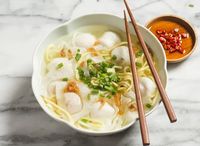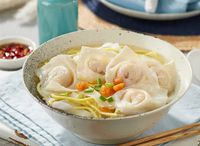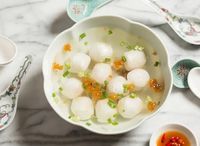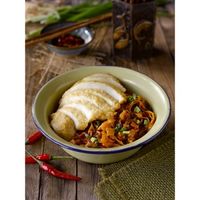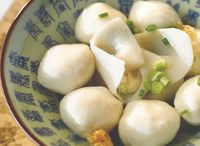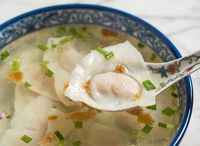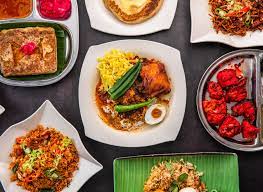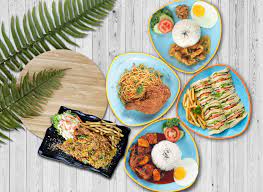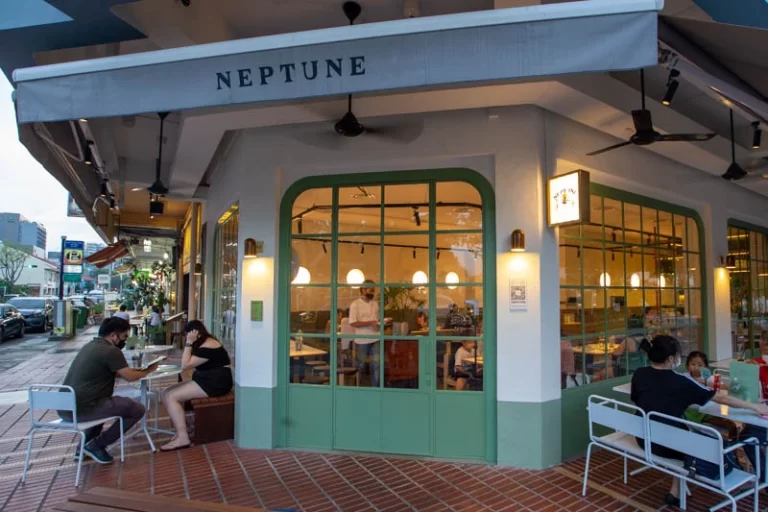Li Xin Teochew Fishball Noodles Menu Prices Singapore 2024
Hello Li Xin Teochew Fishball Noodles lovers, are you looking for the latest Li Xin Teochew Fishball Noodles Menu? You have arrived at the right place then. We have uploaded their complete menu with pictures & updated prices. Below you will find the latest Lists of Li Xin Teochew Fishball Noodles Menu 2024 Singapore with prices.

Li Xin Teochew Fishball Noodles Menu Singapore With Prices List
Popular
Mains 主食
If you’re craving authentic Teochew flavors, look no further than Li Xin Teochew Fishball Noodles. Indulge in their delectable Fish Ball & Fish Dumpling Noodle (starting from S$8.50) and savor the perfect combination of springy fish balls and succulent fish dumplings. For a delightful variation, try the Fish Cake Noodle (from S$7.50), featuring savory fish cakes that will tantalize your taste buds. Their Fishball Soup (S$8.50) and Fish Ball & Fish Dumpling Soup (S$9) are perfect choices for those seeking a comforting bowl of goodness. Don’t miss out on their scrumptious Fish Cake (S$4.50) and Fish Dumpling Noodle (from S$8.20), each dish lovingly prepared to perfection. With a wide array of Teochew fishball delights, Li Xin is your go-to destination for a delightful and satisfying meal.
How much are fishball noodles in Singapore?
The popular Teochew Fishball Mee, also known as Mee Pok Tar, is a delicious dish available at an affordable price in Singapore, typically ranging from SGD $3 to $10 per serving. This local favorite features springy noodles served with flavorful fishballs and a variety of toppings. The dish is commonly found in hawker centers and food stalls across the city. The affordability of Fishball Noodles makes it a go-to option for many locals and visitors alike. Whether you prefer a simple and satisfying meal or wish to explore the diverse toppings available, this dish offers a delightful culinary experience without breaking the bank.
What are the different fishball noodles?
At the Teochew Fishball Noodle stall, customers are spoilt for choice with six different noodle options: Mee Pok, Mee Kia, Yellow Noodles, Bee Tai Mak, Kuay Teow, and Bee Hoon, available in either dry or soup versions. For those craving extra fishballs, herh keow, and tau pok, the mixed soup option priced at $8 or $12 is a must-try. The addition of herh keow is highly recommended and adds a delightful twist to the dish. With such a variety of noodles and toppings to choose from, diners can enjoy a customizable and satisfying dining experience at the stall.
What are 3 types of noodles?
Noodles are a staple in various Asian cuisines, and there’s a wide variety to choose from. Here are eleven different types of noodles:
Egg Noodles: Made with eggs, wheat, and water, commonly used in Asian dishes like stir-fries and soups.
Soba Noodles: Japanese buckwheat noodles, often served cold with dipping sauce or in hot broths.
Ramen Noodles: Japanese wheat noodles typically served in a flavorful broth with various toppings.
Rice Stick Noodles: Thin, flat rice noodles commonly used in Thai and Vietnamese cuisine.
Udon Noodles: Thick, chewy Japanese wheat noodles, often served in soups or stir-fries.
Shirataki Noodles: Low-calorie and low-carb noodles made from konjac yam, popular in keto and vegan diets.
Somen Noodles: Very thin wheat noodles, usually served cold in a light dipping sauce.
Harusame Noodles: Transparent, gelatinous noodles made from mung bean starch, used in soups and salads.
What is fishball noodles?
The noodles are skillfully cooked al-dente, ensuring a delightful chewy texture. Afterward, they are gently tossed in a tantalizing blend of oil, soy sauce, chili paste, and black vinegar, creating a harmonious mix of flavors. Served alongside are fishballs, sliced fish cake, crisp lettuce, and fresh bean sprouts, all enhancing the dish’s overall taste and appeal. Some vendors may even offer delectable fish dumplings as an additional treat. This delightful combination results in a satisfying and flavorsome experience for those indulging in the Teochew fishball noodle dish.
Where did fishball noodles come from?
Fishballs, with their origins in Chiu Chow and Fujian provinces, have a long history of popularity in Southern China, dating back to the Qing Dynasty. However, it was in Hong Kong where they gained international recognition. Initially, Hong Kong-style fishballs were served in a manner closer to the Chiu Chow tradition, featuring white and boiled fishballs paired with noodle soup. Over time, these delicious morsels evolved, and today, you can find various versions, both in Hong Kong and worldwide, showcasing the versatility and enduring appeal of these delectable seafood treats.
Is fishball good for health?
Indeed, fish balls are not only delicious but also offer a range of nutritional benefits. As fish is a rich source of vitamins and minerals, fish balls become a nutritious option. Vitamin D in fish is essential for maintaining strong bones and a healthy immune system. Additionally, fish contains vital minerals like iodine and selenium, which play crucial roles in supporting thyroid function and overall well-being. By enjoying fish balls, you can savor a tasty treat while nourishing your body with these valuable nutrients that contribute to a balanced and healthy diet.
What do fish balls taste like?
Fish balls, especially the dried variety, do have a distinct and robust fish taste. However, some may find them a bit too salty and prefer a milder flavor. Additionally, certain fish balls may contain monosodium glutamate (MSG), which enhances the umami taste. While these additives may not exactly mimic the flavor of fish, they contribute to the overall savory and satisfying taste of the fish balls. For those seeking a less intense flavor or with MSG sensitivity, exploring alternative options or homemade fish balls could be a good choice.

Author: Christopher Tan
Hi there! I’m Christopher Tan, an award-winning writer, cooking instructor, and photographer. My passion lies in combining my love for words, images, and of course, food to create meaningful experiences. I have been honored to have my work published in numerous esteemed publications, including the Sunday Times and Straits Times in Singapore, Saveur magazine in America, and The Peak magazine.
I have expressed my love for food through the written word by authoring and co-authoring multiple cookbooks, including Chinese Heritage Cooking, Ask The Foodie and NerdBaker. I am thrilled to inspire others to create their own meaningful experiences through food, through my writing and teachings. I write restaurant menus and review on eatzeely.com
